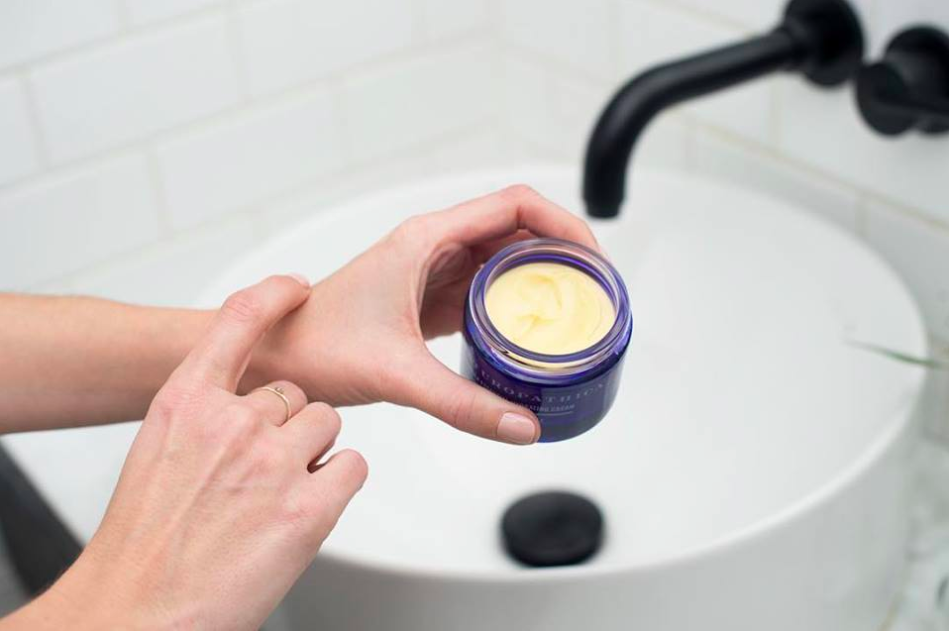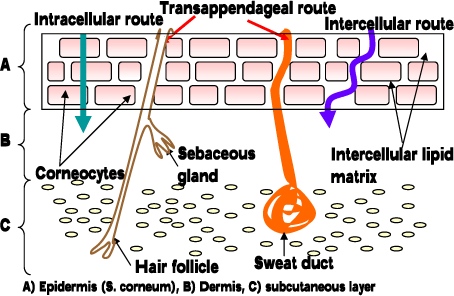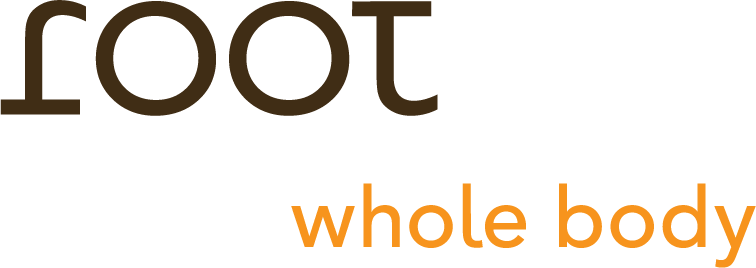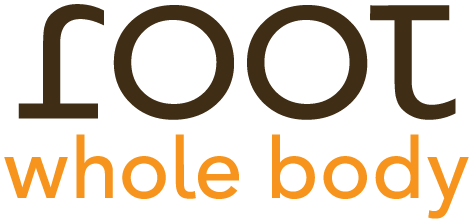
Image Courtesy of Naturopathica
Are you familiar with the term “body burden”? Body burden is the amount of a toxic substance, or toxic load, that builds up in the body over time. Over the past fifteen years, the CDC has tested over 10,000 people in an attempt to determine their “toxic load”. The results identified hundreds of synthetic chemicals in their bloodstream, many of them present before birth. So, how did they get there? There are many pathways – the air we breathe, the water we drink, the food we eat, and the substances we come into contact with every day. In many circumstances, exposure is out of our control, however, there is one source we can do something about – the products we use on our bodies.
You may have heard the statistic that “up to 60% of what you put on your skin gets absorbed directly into the bloodstream”. On the flip side, you also may have heard that the skin provides an impenetrable barrier, or, that the molecules in personal care products are look large to pass through the skin. All of these assertions hold some degree of truth.
One of the many functions of the skin is to act as a barrier to keep fluids and our internal organs in, and to keep harmful elements, such as bacteria and UV radiation, out. The top layer of the epidermis, called the stratum corneum, is-a sheath like layer of dead skin cells and lipids, which, while effective at keeping a host of things out, may be bypassed by small molecules and chemicals designed to enhance product penetration, or where the barrier function of the skin has been compromised.
In most countries, including the US, there are still no regulated and enforced guidelines for beauty products. At last count, less than 20% of the more than 10,000 ingredients found in personal care products have ever been tested for safety by cosmetic industry reviewers. Even products claiming to be “natural” or labeled “made with organic ingredients” can’t be presumed to be clean or safe because standards governing these claims still allow a host of untested ingredients to be included. What’s more, companies are under no legal obligation to report health problems from their products to the FDA, nor do regulators assess the safety of products before they hit the shelves.
Toxins we ingest go through the kidneys and liver are processed by special enzymes to help break down and eliminate many of them. However, any toxins that do make it through the skin bypass this filter and may enter directly into the blood stream or lymphatic system. How much & which toxins reach the bloodstream and lymphatic system remains open to debate and will be influenced by the condition of the skin, the chemical in question and the size of the molecules. Those that do reach the bloodstream & lymphatic system can build up over time, potentially contributing to a host of health problems from cancer to endocrine system issues, reproductive problems to neurological issues.
Generally speaking, Chemicals can penetrate the skin in three ways:
- Directly through cells, called intracellular
2.Between cells, called intercellular, or
3. By entering through structures like hair follicles or sweat ducts, called transappendageal.
Image credit: https://www2.mst.dk/udgiv/publications/2009/978-87-7052-980-8/html/kap05_eng.htmStudies show that a variety of ingredients in skin care and other beauty products are present in the blood and urine of tested subjects. Studies also show a marked decreased in the levels of these chemicals when use of the products containing them ceases. While it’s clear that the skin is not the impenetrable barrier that some claim it to be, the factors affecting absorption through the skin are complex, making it difficult, if not impossible to know exactly how much of a given chemical is being absorbed. This lack of clarity is perhaps more concerning than a “60%” statistic. Science still does not have a firm grasp on how much of a given toxin is too much, not to mention the cumulative effects of these on the body. According to the Environmental Working Group, the average woman uses 12 products, containing 168 unique ingredients, every day and men use an average of 6 products a day with 85 unique ingredients. While we may not be absorbing 60% of everything we put on our bodies, chances are, we are absorbing more than is good for us. Add to this the fact that we inhale and ingest toxins regularly, and it just makes sense to limit your exposure where you can by choosing cleaner products.
Not sure how your products stack up? Here’s a quick reference list of the top twelve “Dirty Dozen” ingredients to avoid in your personal care products, all of which have all been found to have some function as either: endocrine disruptors, carcinogens, mutagens (causing genetic mutations), estrogen mimickers, and /or allergens, as well as being harmful to the environment and aquatic life.
- BHA & BHT (Butylated Hydroxyanisole & Butylated Hydroxytoluen): preservatives found in lipsticks, moisturizes, and some food items.
- Coal Tar Dyes: used as a colorant in hair dye and often labeled as P-phenylenediamine or CI followed by a 5-digit number.
- DEA (Diethanolamine): used to make products sudsy and may be found in cleansers, soaps, shampoos.
- DBP (Dibutyl Phthalate): a plasticizer found in nail polish.
- Formaldehyde-Releasing Preservatives: These may also be labeled as DMDM Hydantoin, Diazolidinyl Urea, Imidazolidinyl Urea, Methenamine, Quaternium-15, and Sodium Hydroxymethylglycinate.
- Parabens: found in 75-90% of cosmetics as a preservative. These are easily absorbed through the skin and may potentiate breast cancer.
- Parfum: often listed as Fragrance. Can be classified as a trade secret so specific ingredients do not need to be disclosed on packaging.[10]
- PEG Compounds: used as thickeners in cream-based cosmetics.
- Petrolatum: also called mineral oil jelly, is used to “lock in” moisture on the skin.
- Siloxanes: can be found in cosmetics, deodorants, moisturizers, and facial treatments.
- SLS (Sodium Laureth Sulfate): makes products sudsy and foamy. It can be found in cleansers, shampoos, and shower gels.
- Triclosan: an anti-bacterial agent. In 2016, the FDA banned triclosan from use in antibacterial soaps and hand washes, among other products.
If you are ready to move beyond the Dirty Dozen, download the Campaign for Safe Cosmetics Red List.
Wondering where to start?
1. Begin with what you use the most and move on from there. In your skincare routine, look at your daily cleanser, moisturizer and spf.
- Be sure to look at your core hygiene products as well, such as toothpaste, deodorant, shampoo and conditioner.
- If you wear perfume, be sure to look at the ingredients. Synthetic fragrance is one of the biggest offenders.
Need help? If you’re not sure, bring your current skin care products in for evaluation by our estheticians when you book a Root facial. They’ll take a close look at what you are using and, if there are concerns, help you prioritize what to replace and make recommendations to phase in healthier options.
Consider replacing conventional, less than healthy for your products with products from conscientious brands, such as Naturopathica or Eminence, both of which formulate their products using safer ingredients. Remember – what you put on your skin is as important as what you put into your body. Swapping out one product at a time will get you well on your way to a healthier you!

